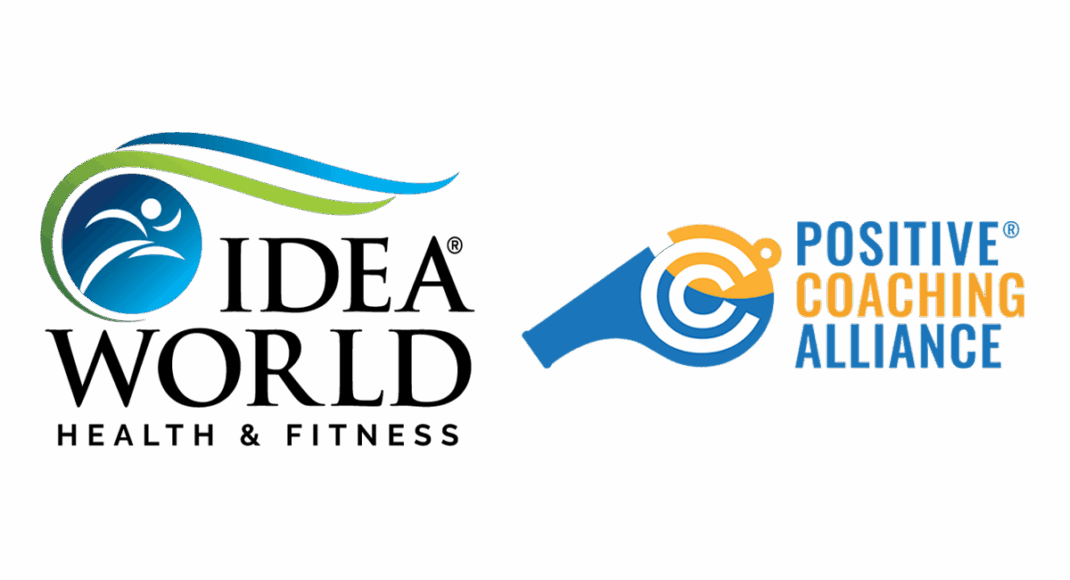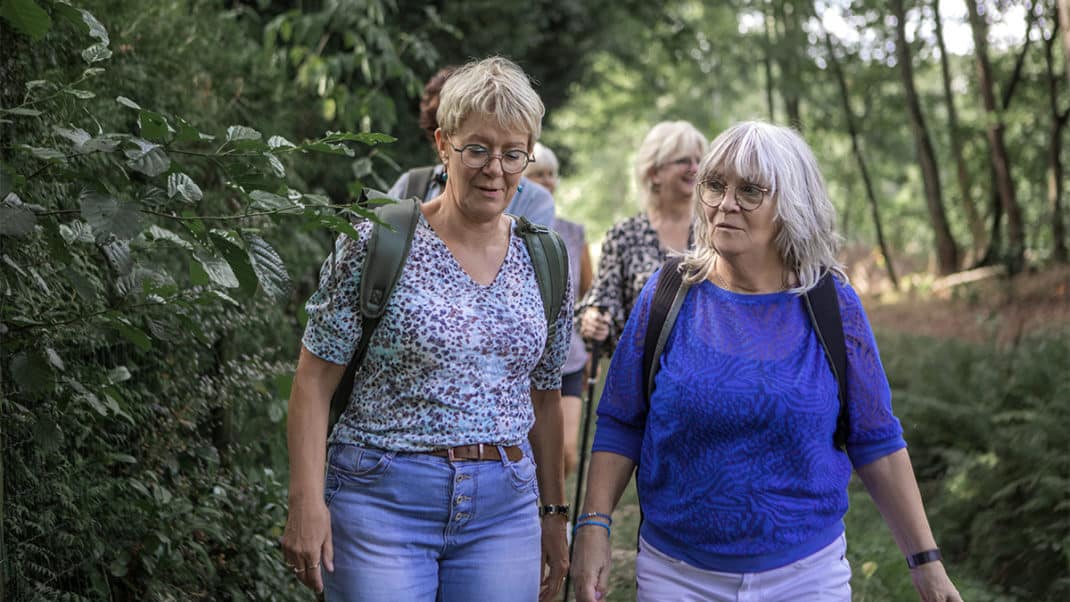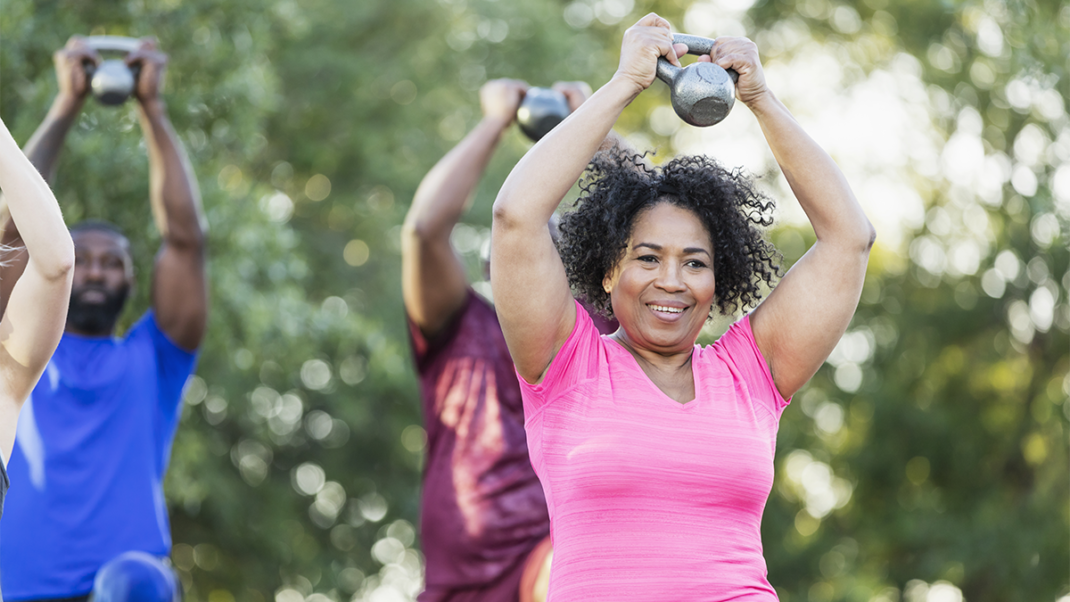The Blends Justify the Means
Use research and your own fine-tuned expertise to create phenomenal fusion experiences.
Research continues to validate the need for effective cross-training and frequent changes in the way we train. Biomechanically, the more we train the muscles in the same way, the less they respond (Kravitz 1997). This research bolsters the case for “hybrid,” “combination” or “fusion” classes, which flood the neuromuscular system with a plethora of stimuli.
Fusion programming combines (or blends) different disciplines, equipment or modes from the fitness training trilogy (cardiovascular conditioning, strength and flexibility). I certainly find validity in the traditional 2-hour yoga class designed for improving flexibility, as well as the hour long indoor cycling class aimed at improving cardiovascular health. However, I’ve also found that fusion classes combat boredom, offer exposure to various disciplines and provide necessary cross-training stimuli. In short, the blends justify the means. Let’s explore how to create and deliver not just a class but an exceptional blended experience.
Step 1: The Investigative Stage
As a spa and wellness consultant, I help various health facilities create unique programming that achieves two purposes. First, a fusion class has to give guests an unmatched experience in which benefits exceed the risk taken and the time invested. Since many people cite lack of time as an excuse for not working out, short fusion classes (30 and 45 minutes) prove attractive to the time-crunched exerciser. If we can offer gains in shorter periods of time, we can attract the masses to our classes.
Second, a fusion program must provide press-grabbing potential. We all occasionally deal with guests or members who at first appear resistant to change. However, opposition quickly diminishes if the advertising promotes benefits and educates guests about imminent health gains. Members leave their comfortable cocoon when we can promise them a better (and more productive) cocoon.
A fusion experience has to have a home before its creation. I gather as much knowledge about a facility as I can prior to creating a program. These are some of the questions I research:
- What equipment currently exists in the movement studio?
- What types of classes are currently drawing the highest and lowest numbers?
- What existing classes on the schedule could I fuse without having to create new ones?
- What does competition in the area currently provide?
Knowing the club’s existing equipment inventory helps me stay within budget. Creating a fusion class from a facility’s most and least popular offerings helps boost numbers across the board as I bring in participants from both disciplines. To keep resistance at a minimum (from those who initially defy change), I fuse from pre-existing classes before introducing new modes of movement. If a cycling class and a sculpting class are both packed, I might create an optional blend of those two, for example. Finally, I check out the competition. This helps me create a program that can be promoted as “the first of its kind,” buzz that public relations and advertising departments love.
Another big part of the investigation puzzle is keeping a finger on the pulse of the industry, and this involves continuing education. I do this by regularly visiting professional education websites (www.ideafit.com and www.inneridea.com) and virtual fitness communities (www.fitwisetraining.com). Knowing which trends are on the rise and which are declining helps me decide how to incorporate discipline, equipment and mode into something new. I want research-based movement programs, and my guideline is to pull from research that is no more than 20 years old. I consult only published, peer-reviewed sources.
I often field questions from instructors who want advice on how to incorporate elements of different disciplines (Gyrokinesis® movements, the Feldenkrais Method®, Pilates, yoga and tai chi) into their fusion experiences when obtaining a full certification in each discipline proves impossible. A lack of credentials shouldn’t prevent you from letting participants glimpse some of the most innovative ideas in movement history. When drawing from a discipline that’s newer to you, learn as much as you can. For every new movement, I study the “Six P’s”:
- pattern: the discipline from which the movement derives
- purpose
- position
- physiology: the muscles used and where participants should be “feeling it”
- planes of movement
- progressions: modifications, including regressions
When you feel comfortable with all aspects of a single movement, add it to your toolbox. Always credit the source of your information, and use the word inspired; for example, “This movement pattern is inspired by my own continuing study of the Feldenkrais Method.” Teach what you know, and know what you know well.
Step 2: The Purpose and Naming Stage
I have developed names for two different types of fusion experiences that I create. The first is called a “microfusion,” in which I combine different modes of fitness and/or pieces of equipment for a singular purpose: cardiovascular, strength or flexibility training. Examples include “Bounce!” (cardiovascular fusion using various pieces of equipment, such as a BOSU®Balance Trainer and a Resist-A-Ball®)and “Millennium Matwork” (strength fusion using Pilates, core training and yoga).
The second type is “metafusion,” in which the purpose includes making gains from a combination of cardiovascular, strength and/or flexibility modes. This realm of hybrid training is fairly unexplored in our industry, and I feel it offers the most potential to attract both guests and press. Some of my creations in this vein include “20! 20! 20!: The Complete Workout for Desperate Housewives” (fusion of cardiovascular, strength and flexibility with no equipment in interchangeable 20-minute sections) and “Enter the Zen Den” (strength and flexibility with Gliding™ discs, yoga and Pilates).
An innovative name alone can help sell a successful fusion program. While traditional names such as “Step and Sculpt” quickly identify the content, some program directors have found success with trendier titles. “We offer cutting-edge programs, and they deserve cutting-edge names,” says Deborah Puskarich, group exercise director for the Cooper Fitness Center at Craig Ranch in McKinney, Texas. “[An intriguing name] makes the guests read the description, and they love when we tease [them] with our advertisements of up-and-coming new experiences.” Rather than offering “class descriptions,” call your class list a “menu” and include a mission statement for each class, describing its overall purpose. The name must back up and represent the class’s mission. (See the sidebar “Sample Fusion Class Names” ideas).
Step 3: The Creation Stage
I use three methods when creating fusion offerings. In the first method, I choose disciplines that seem to complement each other naturally. An example is a program called “The Buddha and the Samurai,” which combines similar body-mind disciplines: the stability of yoga (serene Buddha) and the mobility of Pilates (the moving samurai). A yoga asana flows into a Pilates movement based on position. We begin kneeling in a yoga camel posture, emphasizing stability for several breath cycles. This flows smoothly into a series of Pilates thigh stretches with a different breathing technique, focusing on mobility. A person who may only be familiar with Pilates gets to experience isometric flexibility and strength enhancements from the yoga sections, and yogis and yoginis get a taste of Pilates.
The second method combines two dramatically different disciplines to expose the neuromuscular pathways to a completely new flood of stimuli. An example of this is Yo-Cycle®, a cardiovascular indoor cycling experience followed by body-mind matwork that draws on yogic postures to stretch muscles used in the first part of class. The cycling enthusiast accustomed to an entirely seated, 60-minute indoor ride now gets the advantage of cross-training for some upper-body strength and integrated flexibility without having to spend additional time in the gym.
The third method focuses on a particular discipline but adds a piece of equipment that is not normally associated with it. When I teach Hard Core, Peace Core™, for example, I use Gliding discs to facilitate and add challenge to different core-training moves. Using nontraditional equipment allows participants to explore familiar movements with additional muscular challenges and benefits. Remember that adding equipment does not always spell success. “Less is more when it comes to equipment,” says Norma Shechtman, MEd, MA, a California-based fitness and education consultant who teaches at The Sports Club/LA–Orange County, Equinox and Yoga Works. “Too much complication can frustrate members.”
When looking for ideas, one of my secrets is to focus on “position,” one of the “Six Ps” mentioned earlier. I write down as many movement patterns or exercises as I can think of for one position, drawing from several different genres. For example, let’s take a simple standing position. Here are some examples of what you can do, using different disciplines:
- tai chi: rooster stands on one leg
- Pilates: standing leg circles
- Feldenkrais: posture inventory
- Gliding discs: squat
- yoga: tree pose
These are just a few options; you could add many more. After exhausting your choices with the standing position, you could move on to other positions (quadruped, supine, seated, kneeling, side-lying, prone, etc.) and do the same thing with those. Then try mixing and matching to see what feels smooth and natural, and create fusions based on a steady flow from one position to the next.
Fusion Is Expansion
Thinking outside the traditional toolbox expands cross-training options for group fitness professionals. It’s important to stay on top of trends, draw in participants and also pique press interest. My purpose in sharing my fusion ideas has been to arm you with more tools to capture guests in new ways and to help you supplement your teaching toolbox with different approaches to wellness. I learned years ago that if all you have in your toolbox is a hammer, then every class will seem like a nail! Learn wisely how to blend disciplines, approaches and equipment. This will help members cross-train and become healthier—proving that the blends can justify the means.
SIDEBAR: Sample Fusion Class Names
- 20/20/20: cardio + strength + flexibility
- Animal Kingdom: kids’ program fusing animal poses from yoga, Pilates and tai chi
- Bounce! fusion of cardio work with stability balls and BOSU Balance Trainer
- Buddha Camp: aggressive body-mind
- Building Mental Muscle: meditation + mental agility training
- Creative Cardio: fusion of instructor’s choice of cardio disciplines
- Dim Sum Sampler/Body-Mind Bento Box: yoga + Pilates
- Fluid Fusion: warm aquatic fusion of body-mind
- Hard Core, Peace Core: aggressive strength core work + relaxing flexibility corework
- Millennium Matwork: body-mind disciplines on the floor
- Play! fusion of childhood games for cardio + strength
- Shakti: the experience®: body-mind disciplines taught in silence with nontraditional music
- Toys! strength fusion of balls, bands, boards and BOSU Balance Trainer
- Yo-Chi Glow: yoga + tai chi in the dark with glow sticks
- Yo-Cycle®: mindful “psy-cling” + floor-based yoga
- Yo-Step®: cardio stepping with body-mind 8-counts
Lawrence Biscontini, MA, was the 2002 ACE Instructor of the Year, the 2004 IDEA Fitness Instructor of the Year and the 2004 Can-Fit-Pro Specialty Presenter of the Year. His fusion program Yo-Chi won the 2005 ECA Best Mind-Body Program award. Biscontini works as a trainer and a wellness and spa consultant for his company FG2000 and several other organizations. Learn more at www.findLawrence.com.
References
Kravitz, L. 1997. Aerobic exercise vs. resistance training: Is this the battle of the fitness titans? IDEA Today, 15 (6), 52–58.
Lawrence Biscontini, MA
Lawrence Biscontini, MA, has made fitness history as a mindful movement specialist, winning awards that include the Inner IDEA Visionary Award. He is a philanthropist, presenter, keynoter, and course development specialist for various companies, including ACE, AFAA, FIT and NASM. He also serves on the advisory boards for the International Council on Active Aging and Power Music®, and is an International Spa Association reporter-in-the-field for its #ISPAInterviews series. Lawrence teaches with yoga RYT 500 and decades-long certification experience. His company, Fitness Group 2000 offers scholarships to professional conferences and competitions on several continents. Lawrence runs fit camps in Puerto Rico in the winter months and has authored more than a dozen books.






